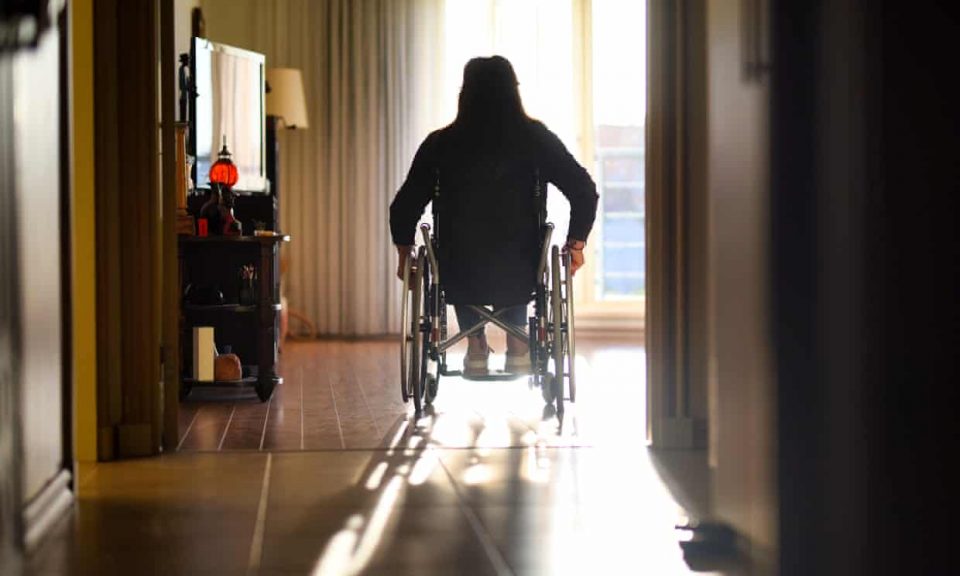A recent report on accessible housing in London reveals that only 3% of new homes approved in the city last year are suitable for older adults or individuals with disabilities.
Prepared by the organization Inclusion London, the report also highlights that fewer than 1% of the new homes are specifically designed for wheelchair users.
This low rate of compliance is notable, especially given Mayor Sadiq Khan’s directive that all new housing developments should adhere to accessibility standards.
Inclusion London’s forthcoming report, set to be released next week, examines the challenges disabled individuals encounter in securing adequate housing and underscores the detrimental effects that a lack of accessible homes can have on their mental and physical well-being.
“It is unacceptable that the adherence to accessibility standards in London is so minimal,” stated Tracey Lazard, CEO of Inclusion London. “This clearly indicates that addressing the housing needs of disabled residents is not a priority across all levels of development.”
Lazard attributed the deficit in accessible housing to inadequate monitoring, insufficient resources, and a system that permits developers to evade adherence to guidelines.
“Our findings indicate a staggering lack of accessible housing across various types of tenure in London, with the shortage being especially pronounced in the social rental sector,” she noted.
Utilizing data from the Planning London Datahub, Inclusion London discovered that merely 3% of homes approved for development in 2023/24 complied with building regulations intended to accommodate older individuals, those with limited mobility, and some wheelchair users.
Furthermore, only 0.8% of these newly approved homes were built specifically for wheelchair accessibility.
A representative for the mayor of London commented, “It is up to local planning authorities to ascertain whether planning applications align with the objectives set out in the London Plan. We are actively collaborating with these authorities to enhance the availability of housing that meets the diverse needs of all residents of London.”
According to a spokesperson from the Ministry for Housing, Communities and Local Government, upcoming policy details concerning accessible new developments will be announced soon.
Inclusion London conducted freedom of information inquiries across all London boroughs, a request that the Observer extended to councils throughout England. These inquiries reveal that 55,249 individuals are waiting for socially rented homes that are accessible for disabled residents, based on data from about half the councils in the country.
Steph, a resident of west London who lives with several chronic health issues classified as “dynamic disability” due to their variability, first sought accessible social housing at 18 years old. Initially, she was provided with temporary accommodation in a supported living facility tailored for neurodivergent young adults, where she stood out as the only resident with physical disabilities.
“They assured me that staying there for two years would definitely lead to permanent, accessible housing afterward,” she shared with the Observer.
However, the small size of her flat made it impossible to accommodate her mobility aids, preventing her from qualifying for an NHS electric wheelchair, as she couldn’t use it at home. Additionally, her bathroom wasn’t designed for easy access and resembled a cramped airplane restroom.
“To take a shower, you had to sit on the toilet because they couldn’t fit in a seat. That was my situation for 13 years. No grabrails could be installed since the bathroom was made of fibreglass,” she recounted.
Moreover, she was prohibited from making any modifications, as the accommodation was classified as temporary.
“Many disabled individuals end up in temporary housing where alterations are not allowed because it is deemed temporary, yet for many of us, it becomes a long-term stay,” she noted.
After 13 years in temporary accommodation, part of her 16-year wait for permanent housing, she was finally able to move into accessible council housing last summer—a new development that received accolades even prior to its inauguration. However, new issues quickly surfaced. The environmentally friendly heating system requires four hours merely to raise the temperature by one or two degrees. Safety limits on bathwater temperatures prevent it from being adequately heated, necessitating that her caregivers bring hot water from the kitchen. Additionally, there is no wifi available.
The sole lift in her building has malfunctioned frequently, most recently on New Year’s Eve, leaving her trapped for ten days while the council failed to address the issue. During this time, the heating system also broke down, and the accessible exterior door malfunctioned. After contracting an infection, an ambulance service responded, and she was briefly placed in a hotel. The council has since stated that she must return to the housing waiting list, as they no longer consider her flat suitable.
“Councils often overlook the fact that disabled individuals have platforms to communicate and share their experiences. We uncover persistent issues—this isn’t just a one-time occurrence. These failures happen repeatedly, and commitments are routinely unmet.”


